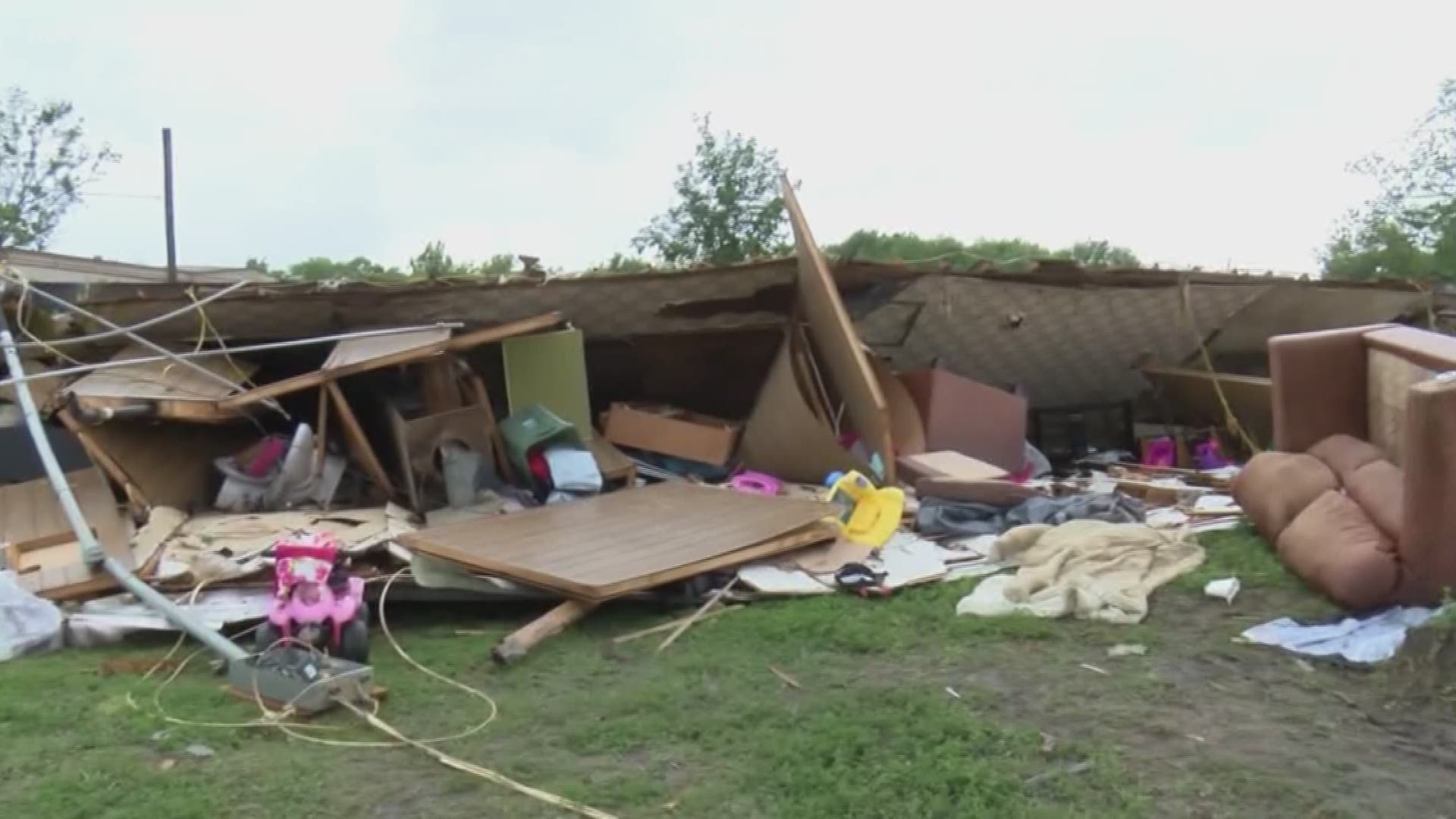Meteorologists with National Weather Service went to southwest Little Rock on Friday, playing detectives, trying to find out what struck the area that produced damage near the Outlets of Little Rock Thursday afternoon.
Dennis Cavanaugh with the National Weather Service walked around Martin Cemetery off I-30 and amongst the toppled trees, he noticed a small, but critical, clue.
“We found a leaf actually embedded inside of a tree trunk," Cavanaugh said.
Seeing something unusual like this revealed the force of power that plowed through the region.
“It takes some very strong winds to do that, usually in excess of 100 mph,” he said.
Straight-line winds can reach over 100 mph in some cases, but the way the trees fell was a clear sign of what produced the damage.
Since the trees were laying in different directions, Cavanaugh determined this was done by a tornado.
“A tornado does damage in two ways, violent rotation and violent updraft at the same time, and so that tends to everything towards common line," he said.
If the evidence showed straight-line winds, then the trees would be facing all one direction or point out from one center location.
“You would see the damage spread out, if you imagine throwing a water balloon on the ground--what it does to the grass, it spreads the grass out in all locations,” Cavanaugh said.
To determine the strength of the tornado, “We have the damage assessment tool kit that allows to take pictures of damage, and then relate that back to what they found in research basically, people that have tested damage and debris in wind tunnels and stuff,” he said.
There are 28 categories of damage that meteorologists investigate. Structures include: apartments, well-built homes, shopping centers, trees, motels, manufactured homes and transmission towers.
Analyzing the type of damage done will give the meteorologist a range of the wind speed.
For example, a manufactured home that is seen flipped over or on its side, but still intact, was faced with winds of 84 to 114 mph.
However, if a manufactured home is destroyed, then the winds were suspected to 110 to 148 mph.


This is why you never stay in a manufactured home when a tornado threatens, because even a weak tornado can cause significant or catastrophic damage to a manufactured home.
Snapped and uprooted trees were used to determine to the strength of the Thursday’s tornado.


"What we found here is pretty strong evidence of an EF-1 tornado and that is going to include wind speeds of 86 to 100 mph."
After the damage assessment is complete, the National Weather Service links all the GPS points of damage to determine the specifics of the tornado, including the path length and width.
The meteorologist will assign the tornado a rating using the Enhanced Fujita Scale which ranges from a weak EF-0 to the nightmare monster an EF-5.


The picture below is the complete survey done Thursday evening for the tornado that struck Gibson in north Pulaski County.



